High-Heeled Footwear
High-heeled footwear
(often abbreviated as high heels or simply heels) is footwear that raises the heel
of the wearer's foot significantly higher than the toes. When both the heel and
the toes are raised equal amounts, as in a platform shoe, it is technically not
considered to be a high heel; however, there are also high-heeled platform
shoes. High heels tend to give the aesthetic illusion of longer, more slender
legs. High heels come in a wide variety of styles, and the heels are found in
many different shapes, including stiletto, pump (court shoe), block, tapered,
blade, and wedge.
According to
high-fashion shoe websites like Jimmy Choo and Gucci, a "low heel" is
considered less than 2.5 inches (6.4 centimeters), while heels between 2.5
and 3.5 inches (6.4 and 8.9 cm) are considered "mid heels", and
anything over that is considered a "high heel". The apparel industry
would appear to take a simpler view; the term "high heels" covers heels
ranging from 2 to 5 inches. Extremely high-heeled shoes, such as those
exceeding 6 inches, strictly speaking, are no longer considered apparel
but rather something akin to "jewelery
for the feet". They are worn for display or the enjoyment of the wearer.
Although high heels
are now usually worn only by girls and women, there are shoe designs worn by
both genders that have elevated heels, including cowboy boots and Cuban heels.
In previous ages, men also wore high heels.
Since the Second World
War, high heels have fallen in and out of favor several times, most notably in
the late 1990s, when lower heels and even flats predominated. Lower heels were
preferred during the late 1960s and early 1970s as well, but higher heels
returned in the late 1980s and early 1990s. The shape of the fashionable heel
has also changed from block (1970s) to tapered (1990s), and stiletto (1950s,
1980s, and post-2000).
Today, high heels are
typically worn by women, with heights varying from a kitten heel of 1.5 inches
(3.8 cm) to a stiletto heel (or spike heel) of 4 inches (10 cm) or
more. Extremely high-heeled shoes, such as those higher than 5 inches
(13 cm), are normally worn only for aesthetic reasons and are not
considered practical. Court shoes are conservative styles and often used for
work and formal occasions, while more adventurous styles are common for evening
wear and dancing. High heels have seen significant controversy in the medical
field lately, with many podiatrists seeing patients whose severe foot problems
have been caused almost exclusively by high-heel wear.
The wedge heel is
informally another style of the heel, where the heel is in a wedge form and
continues all the way to the toe of the shoe.
Reasons
against wearing high heels, which are almost exclusively health and
practicality reasons, include:
1. They can cause foot
pain.
2. They increase
likelihood of sprains and fractures.
3. They make calves
look more rigid and sinewy.
4. They can create
foot deformities, including hammertoes and bunions.
5. They can cause an
unsteady gait.
6. They can shorten
the wearer's stride.
7. They can render the
wearer unable to run.
8. Altered forces at
the knee caused by walking in high heels may predispose to degenerative changes
in the knee joint.
Foot
and tendon problems as listed below.
Women who wear high
heels frequently have a higher incidence of degenerative joint disease of the
knees. This is because they cause a decrease in the normal rotation of the
foot, which puts more rotation stress on the knee.
Reasons
for wearing high heels, which are almost exclusively aesthetic reasons,
include:
1. They change the
angle of the foot with respect to the lower leg, which accentuates the
appearance of calves.
2. They change the
wearer's posture, requiring a more upright carriage and altering the gait in
what is considered a seductive fashion.
3. They make the
wearer appear taller.
4. They make the legs
appear longer.
5.They make the foot
appear smaller.
6. They make the toes
appear shorter.
7. They make the
arches of the feet higher and better defined.
8. They may improve
the tone of a woman's pelvic floor, thus affecting female incontinence.
9. They may help
shorter people use items that have been designed for those of a normal height,
e.g. sit upright with feet on floor on chairs that would otherwise be too high,
reach items on shelves, etc.
During the 16th
century, European royalty started wearing high-heeled shoes to make them look
taller or larger than life, such as Catherine de Medici or Mary I of England.
By 1580, men also wore them, and a person with authority or wealth was often
referred to as "well-heeled".
In modern society,
high-heeled shoes are a part of women's fashion,
perhaps more as a sexual prop. High-heels force the body to tilt, emphasizing
the buttocks and breasts, highlights of a woman's sexuality. They also
emphasize the role of feet in sexuality, and the act of putting on stockings or
high-heels is often seen as an erotic act.
This desire to look sexy and erotic continues to drive women to wear
high-heeled shoes, despite causing significant pain in the ball of the foot, or
bunions or corns, or Hammer toe. A survey conducted by the American Podiatric
Medical Association showed some 42% of women admitted that they would wear a
shoe they liked even if it gave them discomfort.
Types
of high heels
Types
of heels found on high-heeled footwear include:
1.
cone: a round heel
that is broad where it meets the sole of the shoe and noticeably narrower at
the point of contact with the ground
2. kitten: a short, slim heel with maximum
height under 2 inches and diameter of no more than 0.4 inch at the
point of contact with the ground
3.
prism: three flat
sides that form a triangle at the point of contact with the ground
4.
puppy: thick square
block heel approximately 2 inches in diameter and height
5.
spool or louis:
broad where it meets the sole and at the point of contact with the ground;
noticeably narrower at the midpoint between the two
6.
stiletto: a tall,
slim heel with minimum height of 2 inches and diameter of no more than
0.4 inch at the point of contact with the ground
7.
wedge: occupies the
entire space under the arch and heel portions of the foot.
Men and
heels
Elizabeth Semmelhack,
curator for the Bata Shoe Museum, traces the high heel to male horse-riding
warriors in the Middle East who used high heels for functionality, because they
help hold the rider's foot in stirrups. She states that the earliest high heel
she has seen is depicted on a 9th-century CE ceramic bowl from Persia.
Since the late 18th
century, men's shoes have had primarily low heels. A notable exception is cowboy
boots, which continue to sport a taller riding heel. The two-inch Cuban heel
features in many styles of men's boot but was popularised by Beatle boots,
famously worn by the English rock group The Beatles, which saw the
reintroduction of heels for men. Winklepicker boots
also usually feature a Cuban heel. There was also a brief resurgence in
higher-heeled shoes for men in the 1970s (in Saturday
Night Fever, John Travolta's character wears a Cuban heel in the opening
sequence). The singer Prince is known to wear high heels, as well as Elton John.
Bands such as Mötley Crüe and Sigue Sigue Sputnik predominantly wore high heels
during the 1980s. Current well-known male heel wearers include Prince, Justin
Tranter, lead singer of Semi Precious Weapons, and Bill Kaulitz, the lead
singer of Tokio Hotel.
Accessories
The stiletto of
certain kinds of high heels can damage some types of floors. Such damage can be
prevented by heel protectors, also called covers, guards, or taps, which fit
over the stiletto tips to keep them from direct, marring contact with delicate
surfaces, such as linoleum (rotogravure) or urethane-varnished wooden floors.
Heel protectors are widely used in ballroom dancing, as such dances are often
held on wooden flooring. The bottom of most heels usually has a plastic or
metal heel tip that wears away with use and can be easily replaced. Dress heels
(high-heeled shoes with elaborate decoration) are worn for formal occasions.
Products have been
created to alter the appearance of existing high heels. These products, such as
the product "High Pheels" change the color patterning, or offer ways
to accessorize the shoe. These products are convenient because of their ease of
use (slip on) and ability to give new life to existing pairs of heels that are
far past their prime but still fit the user comfortably.
Many philanthropies
have been created around the central idea of men fighting gender violence by
wearing high-heeled shoes and "walking a mile in her shoes". This
theme has shown up in display windows in malls and across several cities in the
United States.
Health
impact
Foot and tendon problems
High-heeled shoes
slant the foot forward and down while bending the toes up. The more that the
feet are forced into this position, the more it may cause the gastrocnemius
muscle (part of the calf muscle) to shorten. This
may cause problems when the wearer chooses lower heels or flat-soled shoes.
When the foot slants forward, a much greater weight is transferred to the ball
of the foot and the toes, increasing the likelihood of damage to the underlying
soft tissue that supports the foot. In many shoes, style dictates function,
either compressing the toes or forcing them together, possibly resulting in blisters,
corns, hammer toes, bunions (hallux valgus), Morton's neuroma, plantar
fasciitis and many other medical conditions, most of which are permanent and
require surgery to alleviate the pain. High heels – because they tip the foot
forward – put pressure on the lower back by making the rump push outwards,
crushing the lower back vertebrae and contracting the muscles of the lower
back.
If it is not possible
to avoid high heels altogether, it is suggested that the wearer spend at least
a third of the time they spend on their feet in contour-supporting
"flat" shoes (such as exercise sandals), or well-cushioned
"sneaker-type" shoes, saving high heels for special occasions.
One of the most
critical problems of high-heeled-shoe design involves a properly constructed
toe-box. Improper construction here can cause the most damage to one's foot.
Toe-boxes that are too narrow force the toes to be "crammed" too
close together. Ensuring that room exists for the toes to assume a normal
separation so that high-heel wear remains an option rather than a debilitating
practice is an important issue in improving the wearability of high-heeled
fashion shoes.
Wide heels do not
necessarily offer more stability, and any raised heel with too much width, such
as found in "blade-" or "block-heeled" shoes, induces
unhealthy side-to-side torque to the ankles with every step, stressing them
unnecessarily, while creating additional impact on the balls of the feet. Thus,
the best design for a high heel is one with a narrower width, where the heel is
closer to the front, more solidly under the ankle, where the toe box provides
room enough for the toes, and where forward movement of the foot in the shoe is
kept in check by material snug across the instep, rather than by the toes being
rammed forwards and jamming together in the toe box or crushed into the front
of the toe box.
Despite the medical
issues surrounding high-heel wear, a few podiatrists recommend well-constructed
low to moderate heels for some patients. It appears a slight elevation of the
heel improves the angle of contact between the metatarsals and the horizontal
plane, thereby more closely approximating the proper angle and resulting in
proper weight distribution of a medium-to-high-arched foot. Other foot
specialists, however, argue that any heel causes unnecessary stresses on the
various bones and joints of the foot.
Single
study suggests potential health benefits of high heels for women. In 2008, Cerruto et al. reported
results that suggest that wearing high heels may improve the muscle tone of a
woman's pelvic floor, thus having a potential effect on female stress urinary
incontinence. In the original publication, the principal
author, Dr. Maria Angela Cerruto of the Department of Biomedical and Surgical
Sciences, Urology Clinic, University of Verona, Italy, writes that with her
publication she wants to respond to an earlier article in the Daily Mail (29
October 2007) concerning the hypothesis that heeled footwear might cause
schizophrenia.
Based on study
results, Cerruto et al. conclude that heels might affect female pelvic floor
muscle activity, reducing myofascial pelvic pain, relaxing the pelvic floor,
and improving pelvic organ well-being.
Additional to the
publication in European Urology, Cerruto et al. also presented the
results of their study at the 2007 European Association of Urology Congress in
Berlin.
Feminist attitudes towards high heels
The high heel has been
a central battleground of sexual politics ever since the emergence of the women's
liberation movement of the 1970s. Many second-wave feminists rejected what they
regarded as constricting standards of female beauty, created for the
subordination and objectifying of women and self-perpetuated by reproductive
competition and women's own aesthetics. Some feminists
argue that the high heels were designed to make women helpless and
vulnerable, perpetuating the gender role of males as protectors of the slowly
staggering women. High heels have also been blamed for reducing the woman to a sex
object by sacrificing practical comfort in favour of an alleged increase in sex
appeal. High-Heels Shoes Pictures
Subscribe to:
Post Comments (Atom)

Custom Search








































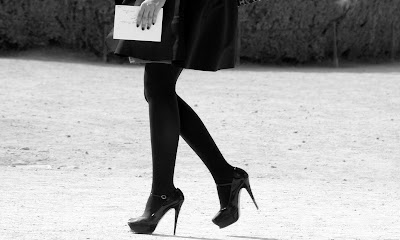































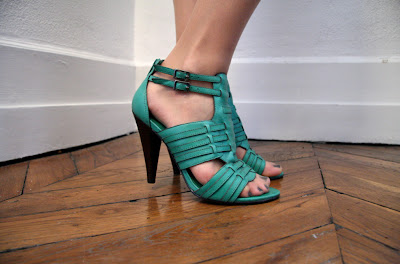




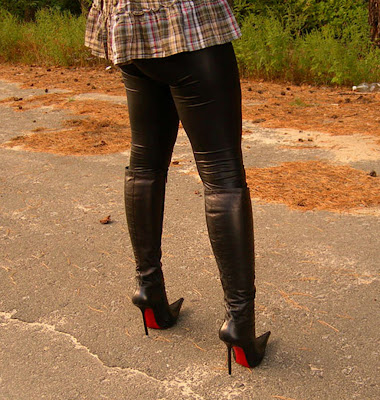
























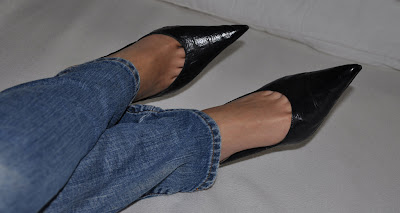













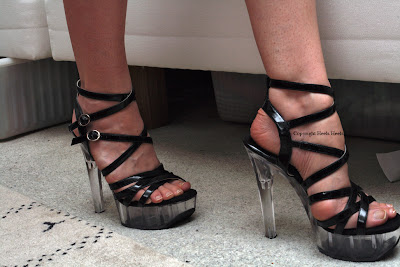









































































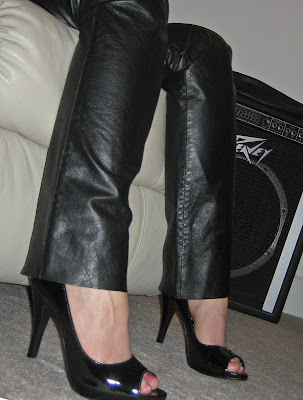












0 comments
Post a Comment